Wind Measurement
Wind is air in motion. Wind measurements are taken at a fixed location using two parameters: wind direction and wind speed. The direction that the wind is flowing from is measured in degrees with respect to true North, or described by the compass points i.e. N, NE, NNE, etc. Wind speed is a measurement of the speed of air movement, and is typically reported in miles per hour (mph) and kilometers per hour (kmph), or in knots (nautical miles per hour) for maritime and aeronautical operations.
Wind direction and wind speed can be measured with a variety of tools. The most common is the anemometer, which comes from the Greek word, anemos, meaning wind. An anemometer typically consists of a rotating vane to measure direction and a shaft with cups attached that spins with the wind to measure its speed. The Beaufort wind force scale can also be used to estimate wind speed via visual observations, and it is commonly used in marine forecasts and weather observations. Most airfields have a windsock, which provides pilots with information on wind direction and approximate wind speed.
Anemometers can be divided into two classes: those that measure the velocity of the wind, and those that measure the pressure of the wind. Since there is a close connection between the velocity and the pressure, a suitable anemometer of either class will give information about both these quantities.
Types of anemometers
Velocity anemometers
Cup anemometer
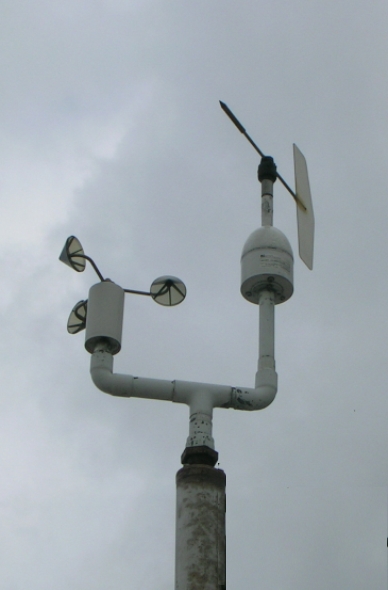 |
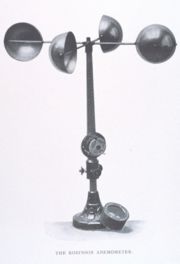 |
The simplest type of anemometer is the cup-anemometer, invented by Dr. John Thomas Romney Robinson in 1846. It consisted of four hemispherical cups each mounted on one end of four horizontal arms, which in turn were mounted at equal angles to each other on a vertical shaft. Airflow passing the cups in any horizontal direction turns the cups in a manner that is proportional to the wind speed. Therefore counting the turns of the cups over a period of time produces the average wind speed.
In later stages of development, the Robinson cup anemometer was modified into a three-cup anemometer with a cup wheel design. The anemometer is fitted with a wind vane to detect the wind direction. A wind vane generally has two parts, or ends: one that is usually shaped like an arrow and another is wider to catch the breeze. The arrow turns into the winds and will point to the direction the wind is blowing from so if it is pointing to the east, it means the wind is coming from the east.
Windmill anemometer
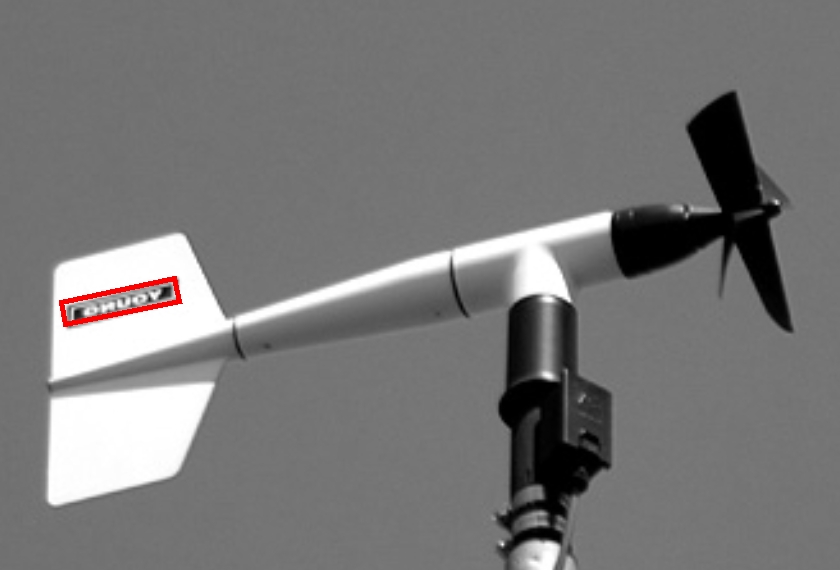 |
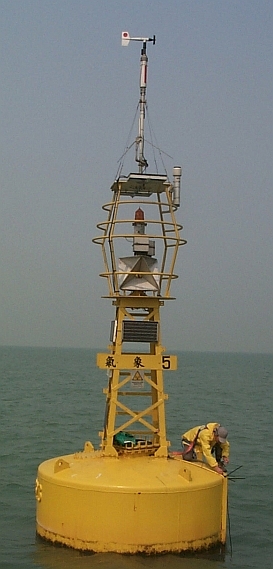 |
The windmill anemometer consists of a shaft with a tail fin and a propeller positioned at opposite ends and mounted to a vertical pole. Wind blowing against the tail end causes the anemometer to rotate until the propeller faces towards the wind, thus indicating the wind direction. The blades of the propeller rotate with the wind similar to a traditional windmill. The rotation rate of the spinning propeller is measured and converted into wind speed.
Hot-wire anemometer
 |
Hot-wire anemometer uses a very fine wire electrically heated up to some temperature above the ambient. Airflow passing the wire has a cooling effect on the wire. The electrical resistance of most metals is dependent upon the temperature of the metal, a relationship can be obtained between the resistance of the wire and the flow velocity, and hence the wind speed.
Hot-wire anemometers, while extremely delicate, have extremely high frequency-response and fine spatial resolution compared to other measurement methods, and as such are almost universally employed for the detailed study of turbulent flows, or any flow in which rapid velocity fluctuations are of interest.
Pressure anemometers
Pressure-plate anemometer
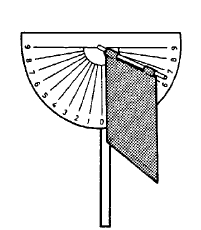 |
Pressure-plate anemometer is the earliest anemometer dated back in about 1450. It is simply a flat plate suspended from the top on a horizontal axis so that the wind deflects the plate. Wind speed is then determined from the displacement of the plate. Later version of this form consists of a flat plate, either square or circular, and a wind vane. The wind pressure exerted on the plate is balanced by a spring. The compression of the spring determines the wind speed, which is read off on a suitable gauge. Plate anemometer is not suitable to record light wind or variable wind due to its simple design.
Pressure-tube anemometer
 |
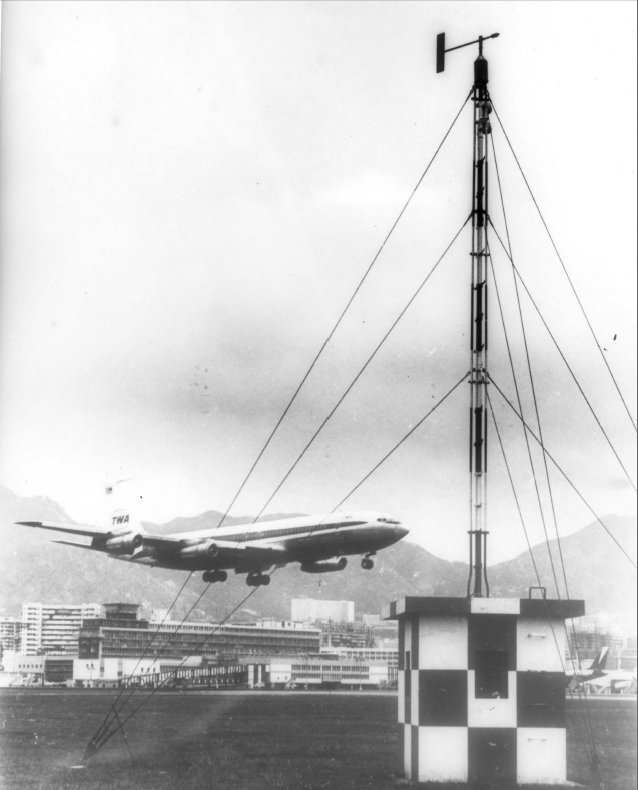 |
Pressure-tube anemometer is of slightly more complex design than plate anemometer. The instrument makes use of air pressures of airflow in two different conditions to measure wind speed i.e. the pressure effect when wind is blowing into a tube, and the suction effect when wind is blowing by side of a perforated tube. The combined effect of pressure and suction can deduce wind speed. The pressure difference acts on a float in a sealed cylindrical tank, which is partially filled with water. The vertical level of the float indicates the wind speed. The float is connected to a rod and a pen which records on a chart on a vertical drum driven by a 24-hour clock. Tube anemometer has a wind vane to detect the wind direction. One advantage of tube anemometer is its self-sufficiency. It can be mounted atop a high pole and left unattended for a long period.